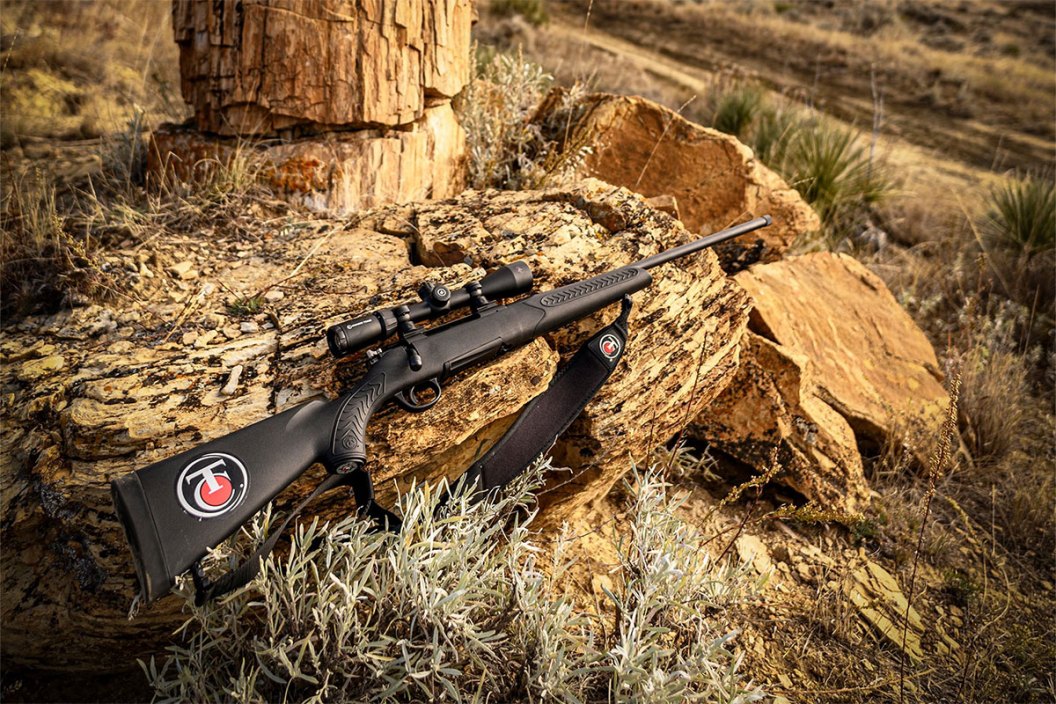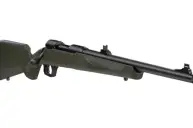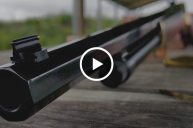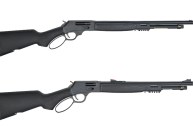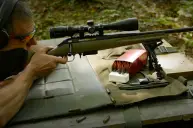Here's why we think we could have benefited big time from shooting the Compass II in our early years.
Most of us who count ourselves in the hunter or shooting enthusiast communities started handling firearms at a pretty young age. Maybe it was with our grandfathers in the back 40, aiming at tin cans on a fence post, or perhaps we had more proper tutelage from an instructor, hunting mentor, or knowledgeable gun owner.
Even if it took until later in our years to pick up a gun and start shooting, there's always a learning curve at the beginning.
And though some would say it doesn't really matter what kind of firearm you start out with, we're here to dispute that. Our issues with that idea were solidified once we shot the Thompson/Center Compass II, the gunmaker's new edition of their original centerfire bolt action rifle.
For us, it epitomizes what we would have preferred in a gun we grew up shooting. There are plenty of reasons why, but here are the four biggest.
A Realistic Expectancy of Longevity
For a lot of us, our first guns are decades old by now. Some of us may still have them, and they may still be in decent shape, but odds are there are aging effects on parts like wooden stocks, steel barrels, and older generation materials that are no longer widely used.
If we started with a gun like the Compass II, even the most outdated parts from a design and material standpoint would still stand up to years of use. The synthetic stock is superbly ergonomic with its textured grip panels, but it is lighter and more durable than any wood from years past. The Weather Shield coating on the barrel and receiver gives those parts five times the corrosion protection than untreated stainless steel.
Had we started with a Compass II, we're betting it would still look and perform as well today as it did 20 years ago.
The Recoil Control
If we had the ability to attach a suppressor (or at least a muzzle brake) to the first gun we ever shot, there may have been less nervous anticipation about the recoil. It's nearly every new shooter's main concern, and if they're starting out with something that reduces that recoil from the beginning, it can help introduce the kick and build it up as more experience is gained.
If you're a really young shooter handling a gun for the first time, too much recoil or an injury (like a bruised shoulder or scope eye) could be enough to turn you off entirely. If we used a Compass II and attached a suppressor, that problem would be pretty well solved.
The threaded barrel on the Compass II lets you use one of those recoil-reducing mechanisms. Plus there's a soft rubber recoil pad at the butt end of the stock, which helps a lot too.
An Accuracy Guarantee
Some might say that a less-than-perfectly accurate gun isn't necessarily a bad thing for an early shooter. They'll learn to compensate and adjust, or at least that's the argument we've heard. Give them something too accurate out of the box, and they'll get overconfident fast.
Quite honestly, that's rubbish.
The best way to show a new gun owner how the tiny things can affect accuracy is to hand them a firearm that's consistent shot after shot. Sure, if we hit a one-inch group at 100 yards with the first three shots we ever take with a gun, we might get a little full of ourselves. But we'd like to think we could overcome that cockiness, and turn it into a tangible shooting education.
It's worth mentioning that the Generation II Trigger System that T/C puts to good use on the Compass II works wonders for accuracy as well.
The Price Point
First guns shouldn't necessarily rank high on the pricing list, and it's safe to say that's a mantra shared widely across the shooting sports community. But they also shouldn't be cheap, as in poorly made or lacking certain features.
T/C understands where folks are coming from with this belief, and did their part to maintain a very reasonable price for the Compass II. It sits at an MSRP of $405, far less than the majority of bolt-actions in similar categories.
Even at that price, the Compass II includes attributes typically found on only higher-priced guns. The 5R rifling, reliable 3-lug bolt design, and Generation II Trigger System are significant upgrades, but the overall cost doesn't reflect them with a big jump upwards.
By now you've probably caught on to how we feel about the Compass II as a first rifle, and to be quite honest, these are just the first reasons that come to mind. There's a lot of advantage in starting out with a quality gun that does all the things a high-end gun does, but without the attached price tag.
As we've evolved in our gun ownership years, there are attributes and characteristics we've come to value above others. The Compass II seems to tick them all off the list.
Now that we can "see the light" a little better than before, we really wish we had the Compass II at our earliest shooting stages. But since it took until now to find what we wanted, there's no reason not to envision the updated line from T/C as one of the best options for an introduction to firearms and they're capabilities.
NEXT: IS IT TIME FOR A NEW DEER RIFLE?
This post contains sponsored content.
